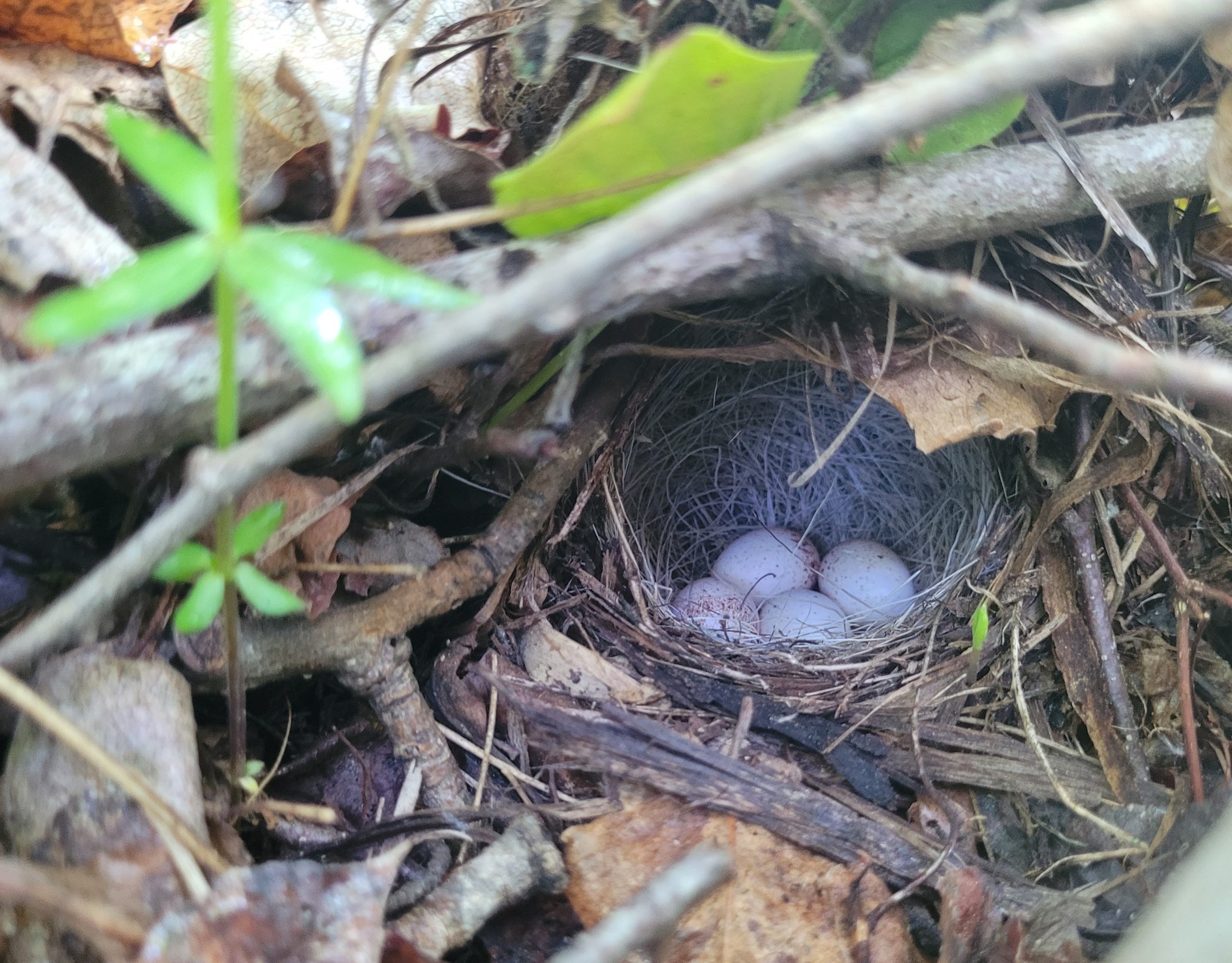As June 10 concluded, so too did the 2022 Spring Migration Monitoring program at the Lesser Slave Lake Bird Observatory. With daily coverage since April 18, arrivals and migration peaks have been documented for 160 bird species. Although bird movements began slow-steady with a few sparrow rushes early in the monitoring period, there was a distinct lull mid-May as our long-distance migrants were slow to arrive. When they did, it spurred a late-season burst of activity. However, aside from some big days of geese migration, overhead counts were subdued for much of the season.
After a few waves of migration and relatively steady captures near the season’s end, spring monitoring banded an unofficial 1,244 birds from 50 species – above the average of 949 birds from 46 species per spring. This makes 2022 the busiest spring for banding since 2012.
The top five most frequently banded species were Swainson’s Thrush, Slate-coloured Junco, American Redstart, White-throated Sparrow, and Canada Warbler. With 80 banded in the last two weeks, Canada Warblers broke their previous banding record of 57 set in spring 2001. Other notable captures included our tenth spring Cape May Warbler, fifth Common Redpoll, fifth and sixth LeConte’s Sparrow, and fourth Brown Creeper. The last bird banded of the spring season was a young male American Redstart.

Many of our local bird species have completed their migrations and set up their breeding territories. As a result, we are switching gears to our Monitoring Avian Productivity and Survivorship (MAPS) program. This program focuses on our local breeders using less intense monitoring effort than our migration program. Banding is performed once at each of our four stations every ten days rather than daily to minimize any impact our monitoring may have during the sensitive breeding window.
We recommend that you similarly postpone or be extremely careful with landscaping projects that may disturb nests and to keep your pets contained to your property to help our birds replenish their populations after a difficult migration. Many of these birds have flown thousands of kilometers from Central and South America just for the chance to raise their young over the coming weeks.

Our first MAPS round began with a bang possibly due to the tail end of these delayed migrations. Already we have banded 102 birds from 18 species in this program which averages 237 bands in the whole season. With 52% of captures split between just three species, this busy round was thanks to American Redstarts, White-throated Sparrows, and Least Flycatchers.
Since many birds captured during MAPS bred here successfully the year before and they can return to within 10 m of last year’s nest, we frequently recapture birds banded in prior years or banded at the nearby migration monitoring site. These recaptures were similarly plentiful, and 54 birds have already been recaptured compared to the average of 112 recaptures per MAPS season. We are excited, though nervous, to see if these busy captures continue into our second-round next week.
By Robyn Perkins, LSLBO Bander-in-Charge
The follow is the unofficial band totals for each species we captured during Spring Migration Monitoring, 2022:
| Species | # Banded | Species | # Banded | |
| Swainson’s Thrush | 132 | Ruby-crowned Kinglet | 7 | |
| “Slate-coloured” Junco | 131 | Orange-crowned Warbler | 7 | |
| American Redstart | 128 | Yellow-bellied Sapsucker | 6 | |
| White-throated Sparrow | 88 | Yellow-bellied Flycatcher | 6 | |
| Canada Warbler | 80 | Savannah Sparrow | 6 | |
| Ovenbird | 63 | Hermit Thrush | 5 | |
| Least Flycatcher | 52 | Eastern Phoebe | 4 | |
| Clay-coloured Sparrow | 48 | Black-capped Chickadee | 4 | |
| Alder Flycatcher | 46 | House Wren | 4 | |
| American Tree Sparrow | 45 | “Western” Palm Warbler | 3 | |
| Chipping Sparrow | 44 | Blue Jay | 2 | |
| Black-and-white Warbler | 40 | Le Conte’s Sparrow | 2 | |
| “Myrtle” Warbler | 40 | Sharp-shinned Hawk | 1 | |
| Mourning Warbler | 35 | Downy Woodpecker | 1 | |
| Tennessee Warbler | 28 | Philadelphia Vireo | 1 | |
| Common Yellowthroat | 26 | Brown Creeper | 1 | |
| Northern Waterthrush | 24 | Gray Catbird | 1 | |
| Lincoln’s Sparrow | 23 | Common Redpoll | 1 | |
| Red-eyed Vireo | 18 | Fox Sparrow | 1 | |
| American Robin | 18 | “Oregon” Junco | 1 | |
| Yellow Warbler | 18 | Connecticut Warbler | 1 | |
| Magnolia Warbler | 11 | Cape May Warbler | 1 | |
| Rose-breasted Grosbeak | 11 | Blackpoll Warbler | 1 | |
| Gray-cheeked Thrush | 10 | Western Tanager | 1 | |
| Song Sparrow | 9 | Total number of birds banded, 2020 | 1244 | |
| “Gambel’s” White-crowned Sparrow | 8 | Total number of species banded, 2020 | 50 |
